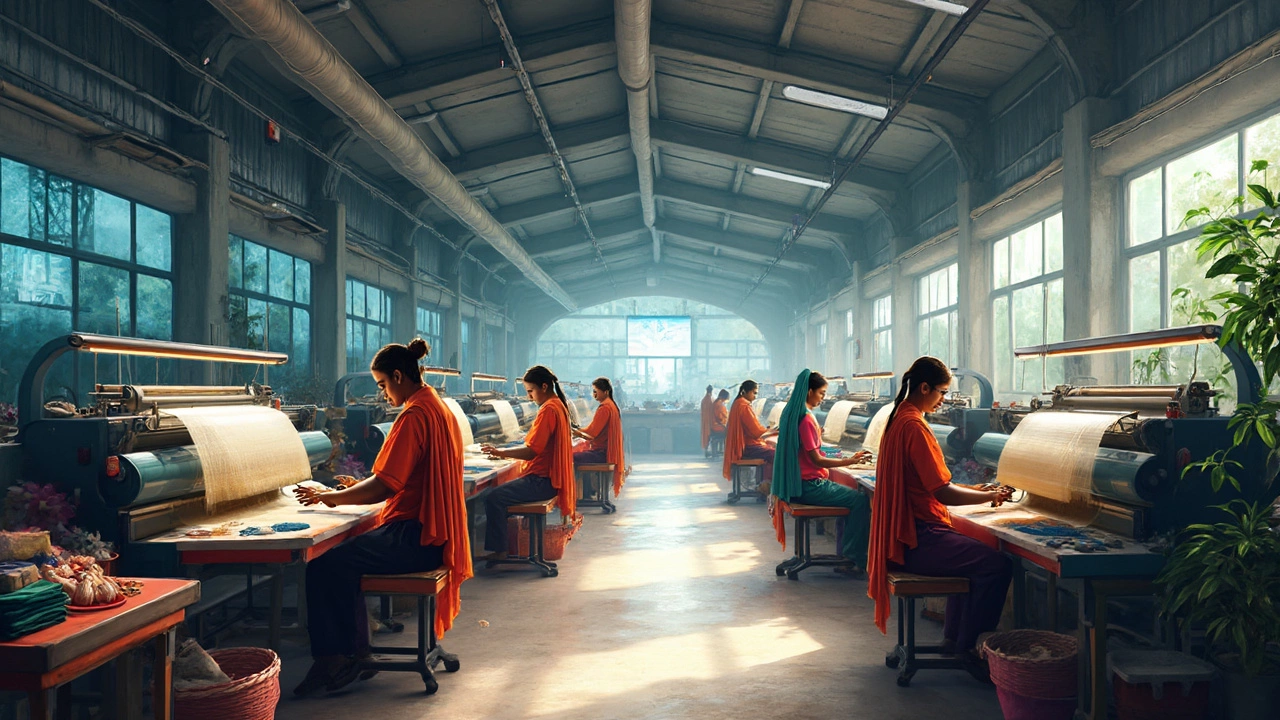Textile Exports 2024 – What’s Shaping the Market?
India’s textile sector is buzzing with activity this year. From fresh government incentives to shifting fashion tastes overseas, a lot is happening that can boost export volumes. If you’re a factory owner, a supplier, or just curious about where Indian fabrics are landing, this rundown will give you the facts you need right now.
Top Destinations and Demand Drivers
In 2024 the United States, the European Union, and the United Arab Emirates remain the biggest buyers of Indian textiles. The U.S. is pulling in more cotton garments because of rising demand for sustainable, low‑cost fashion. Europe is looking for high‑quality silk and wool as consumers chase premium, eco‑friendly products. The Gulf states are snapping up synthetic fabrics for fast‑moving retail chains. Besides geography, three forces are pushing demand: stricter sustainability rules, a surge in online shopping, and the growing appetite for “Made in India” branding.
How Indian Manufacturers Can Boost Their Export Share
First, upgrade your product catalog. Buyers want traceable fibers, so adding certifications like GOTS or Oeko‑Tex can win contracts. Second, cut lead times by adopting digital order management – a simple ERP system can shave days off production. Third, tap into trade fairs and virtual marketplaces that target the specific regions mentioned earlier. Finally, keep an eye on pricing trends; a slight tweak in cost structure can make your offer more attractive than competitors from Bangladesh or Vietnam.
Logistics also matter. Shipping routes through the Suez Canal are back on track after last year’s disruptions, meaning faster delivery to Europe. For the U.S., using the Port of Mundra with direct container services reduces handling costs. If you’re exporting to the Gulf, consider air freight for high‑margin luxury items; the extra cost often pays off in premium pricing.
Government schemes are another lever. The “Textile Export Promotion Council” offers rebates on freight and simplified customs paperwork for firms that meet export‑value thresholds. Registering for the “PLI (Production Linked Incentive) Scheme” can also unlock extra cash for technology upgrades, which directly improves product quality and export readiness.
Don’t forget to watch the competition. Bangladesh is still a low‑cost powerhouse for basic garments, while Vietnam excels in technical fabrics. Positioning your products in niche segments—like organic cotton, heritage handloom, or performance textiles—helps you avoid direct price wars and builds a loyal buyer base.
In short, 2024 presents a mix of challenges and openings for Indian textile exporters. By focusing on certification, speed, market‑specific outreach, and leveraging government incentives, you can capture a larger slice of global demand. Keep tracking the top destinations, stay agile with logistics, and continually polish your product story – that’s the recipe for a stronger export game this year.

Textile Industry Outlook 2024: What's Really Shaping Indian Textile Manufacturers?
India's textile industry in 2024 is running at a different pace with global trends shaking things up. Domestic demand is ticking up, and export numbers are shifting, but labor, costs, and new technology are changing the game for manufacturers. Sustainability isn't just a buzzword—buyers are demanding proof. This article lays out the raw facts, industry shifts, and tips for textile manufacturers in India looking to stay ahead. Get a fresh look at what's actually driving the future of Indian textiles.
